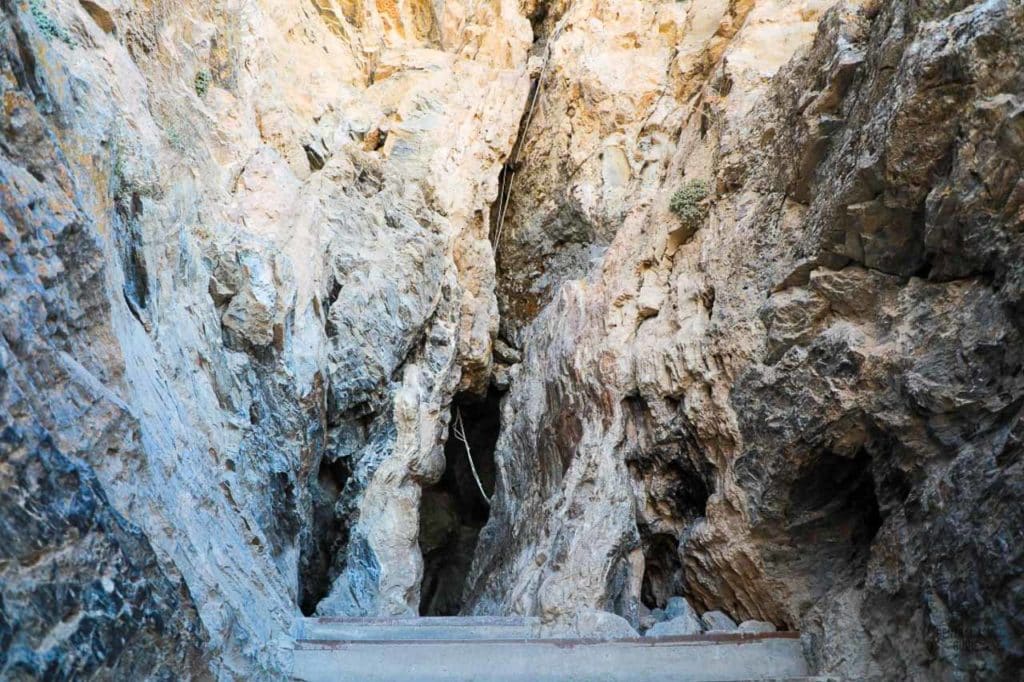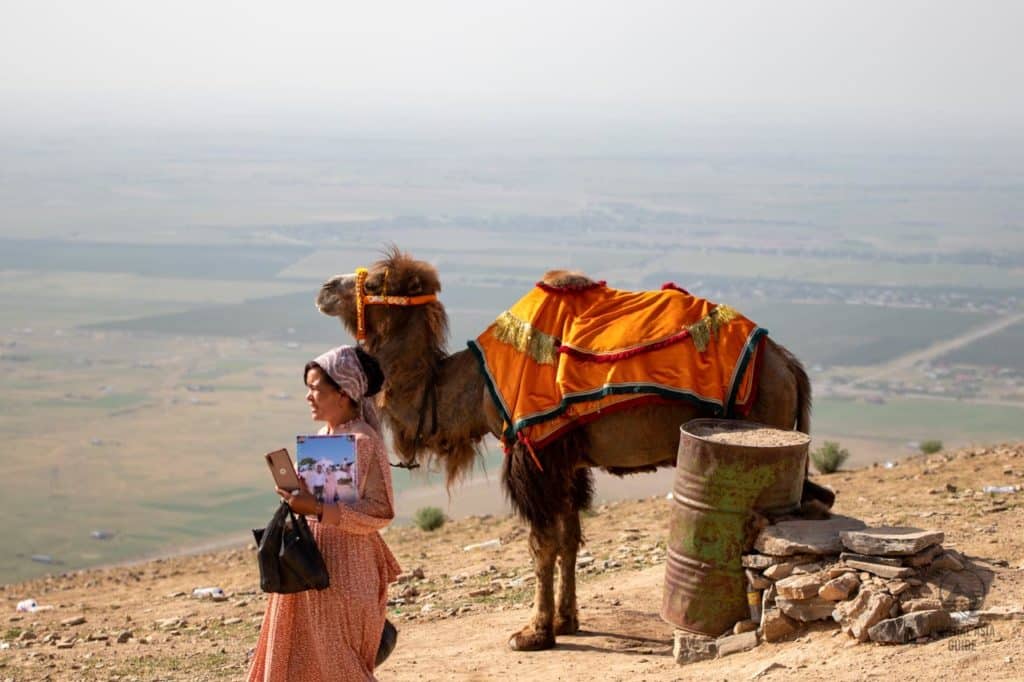Hazrat Daud Cave
Hazrat Daud Cave
Hazrat Daud (or Hazhat Davud or Hazrati Daod) is a holy place located within the village of Aksai, 40 km southwest from Samarkand. Khazrati Dovud cave is located at an altitude of about 1250 meters, at the foot of the western spur of the Turkestan and Zarafshan ranges with a rocky wedge protruding into the Karshi steppe. The cave itself is shrouded in many mysteries, secrets and legends, which fathers have told to their sons from generation to generation. The most popular legend is that David (yes the one who slew the goliat) has left his handmarks inside the cave. Every year, pilgrims from many countries and different confessions flock to this place to worship the holy place and ask for forgiveness, healing, or the fulfillment of desires.

It is believed that David is worshiped in three world religions at once. Muslims call him Hazrat Daud while Christians and Jews know him as David. His life story is shrouded in secrets and legends and it is told that he had the gift of prophecy and healing. Later David became the ruler of the united kingdom of Israel and Judah at the age of 33 and reigned for forty years.
For a tourist this place is also an interesting location to follow how the locals behave in this pilgrimage site. The cave area is also often very crowded, especially during the summer weekends and it can be hard to reach the place due to so many cars parked along the narrow roads. It is always better to go early in the morning.


Hazrati Daod Legends
One of the legends says that the Jewish king and prophet David (among the Muslims Dovid, Davud, or Daoud) arrived to this location in order to hide from his enemies and decided to pray here and God heard his prayer giving him supernatural power to break the rock with his hands and to disappear into this hand dug cave and indeed inside the cave you can see that the surface of the rock seems like it would have been carved by human fingers.
According to Arab legend, the prophet Daoud was sent by Allah to the east to preach monotheism. His speeches angered the Zoroastrians living here, who began to persecute him. Daud, having prayed to Allah, was able to move the stones with his hands and take refuge in the so formed mountain cave.
Yet another legend related to this place that has lasted to this day is about the mythical girls Pari, whom a shepherd once saw here, asleep among the mountains. He knew that Pari could forever rob a man of his mind and damage his family if they found out that someone is watching how they bathe naked and comb their hair, so he ran away from there not to bring trouble. It is believed that since that time this area has remained deserted for a long time: many believe that ominous female laughter can be heard near the local rivers and waterfalls at night.


David's cave stairs
The cave and a mosque next to it are located up on a hill with stairs leading there. According to various sources, the number of stairs differ from 1303 to 2500, perhaps the truth is somewhere between them but there are very many nevertheless. For inexperienced hikers, climbing the stairs might be difficult and therefore some visitors hire donkeys, horses or even camels to make the journey up by the hillside, bypassing the stairs and tents. The hillside path can also be climbed by foot and can be even considered easier as it is not crowded at all and it is easier to find places to rest but be sure to bring enough water if you choose this path as there are no vendors there.


Most go on foot by the stairs, including the elderly, many of whom go to the sacred place barefoot. At every turn of the stairs, at every shelter, vendors offer soft seats to take a break from the climb and offer medicinal mountain herbs or maybe a skin of a wild animal or something else as a souvenir.
The steps will eventually bring you to the top of the hill, where tired donkeys and horses graze the grass. At the highest point there is a small ancient mosque surrounded by colorful women’s robes and children’s shouts. Here at the height of 1250 meters above sea level, amazing views of the surrounding mountains and plains can be admired.
The Daod Cave
The cave itself is technically not a cave, but a long narrow corridor between the rocks located behind the mosque and with a roof of stones (so a cave). The measures of the cave vary from 0,5 to 4 meters width up to 15 meters in height and to 60 meters long with some carpeted benches for elderly people to sit. At the end of the cave people kneel on the wet stone floor, join their palms and silently listen to the echoing voice of the mullah, reading prayers and telling legends about this unusual place.


Historians and archaeologists still argue whether David existed as a historical person and whether this whole story is nothing no more than a legend. There are only few foreign tourists at the Hazrat Daud cave but even more pilgrims and local believers. If it gets very crowded at the mouth of the cave, it is possible to pass the line by paying a small extra fee.
Shrine on top of the Hazrati Daod mountain
At the very peak of the mountain there is an old mosque which will require the visitor to climb about 200 more steps.
